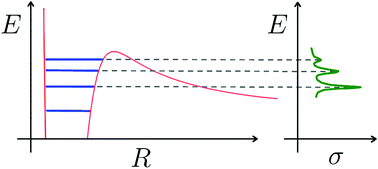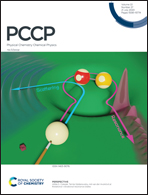Rotational–vibrational resonance states
Abstract
Resonance states are characterized by an energy that is above the lowest dissociation threshold of the potential energy hypersurface of the system and thus resonances have finite lifetimes. All molecules possess a large number of long- and short-lived resonance (quasibound) states. A considerable number of rotational–vibrational resonance states are accessible not only via quantum-chemical computations but also by spectroscopic and scattering experiments. In a number of chemical applications, most prominently in spectroscopy and reaction dynamics, consideration of rotational–vibrational resonance states is becoming more and more common. There are different first-principles techniques to compute and rationalize rotational–vibrational resonance states: one can perform scattering calculations or one can arrive at rovibrational resonances using variational or variational-like techniques based on methods developed for determining bound eigenstates. The latter approaches can be based either on the Hermitian (L2, square integrable) or non-Hermitian (non-L2) formalisms of quantum mechanics. This Perspective reviews the basic concepts related to and the relevance of shape and Feshbach-type rotational–vibrational resonance states, discusses theoretical methods and computational tools allowing their efficient determination, and shows numerical examples from the authors' previous studies on the identification and characterization of rotational–vibrational resonances of polyatomic molecular systems.

- This article is part of the themed collections: PCCP Perspectives and 2020 PCCP HOT Articles


 Please wait while we load your content...
Please wait while we load your content...
